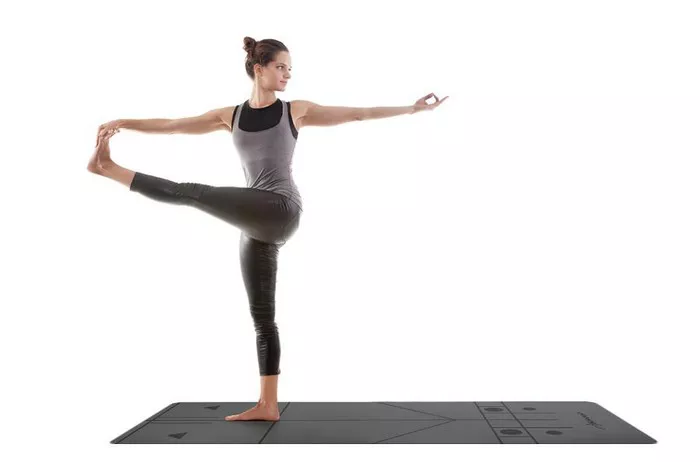Aerial yoga has become a popular and exhilarating way to combine strength, flexibility, and mindfulness. Whether you’re an experienced yogi or a beginner looking for a new challenge, aerial yoga offers an entirely different approach to traditional practice. The unique aspect of aerial yoga is the use of a silk hammock or fabric sling that supports the body in various poses, allowing practitioners to explore different movements, stretches, and inversions. While aerial yoga is a great way to engage your body and mind, one crucial question often arises: should you eat before a class?
In this article, we’ll delve into the best practices regarding eating before an aerial yoga session, how food intake affects your performance and comfort, and tips on how to nourish your body for optimal results.
Understanding Aerial Yoga and Its Demands
Aerial yoga is a physically demanding practice that requires core strength, balance, flexibility, and mental focus. The hammock provides support for deep stretches, inversions, and poses that would typically be more difficult or challenging on the mat. However, because of the added dimension of being suspended in the air, aerial yoga can place additional pressure on the body, especially the core, spine, and muscles.
Incorporating inversions—poses where the body is flipped upside down—adds a unique challenge. Inversions can be beneficial for the body by improving circulation, spinal alignment, and balance. However, they can also be uncomfortable, especially if your stomach is too full or if you’ve eaten certain foods that don’t sit well with your body.
The Impact of Eating Before Yoga
Food is essential for providing energy to fuel our bodies, but it’s equally important to understand how and when to eat before yoga, especially aerial yoga. Eating the wrong types of food or consuming large meals right before a class can lead to discomfort, bloating, nausea, and a decrease in performance. Conversely, not eating enough can leave you feeling weak or fatigued, making it difficult to get the most out of your practice.
The timing and type of food you consume before an aerial yoga session can affect your performance and experience. Let’s explore both sides of the equation—eating too soon versus eating too late—and provide insights on how to strike the right balance.
Should You Eat Right Before Aerial Yoga?
As a general rule, it’s advisable to avoid eating a large meal immediately before an aerial yoga session. When your body is engaged in intense movement, the digestive system diverts energy toward digestion, and this can be counterproductive to the demands of an aerial yoga class. Your body needs to focus on stabilizing your muscles, maintaining balance, and performing inversions and stretches.
Additionally, the act of being upside down or in a suspended position can shift the digestive process, often leading to discomfort, bloating, or acid reflux. The hammock’s fabric, which presses against the body in various ways, can put pressure on your stomach and intestines, making it difficult for your body to properly digest a heavy meal.
It’s essential to allow time for digestion before a class. Most experts recommend waiting at least 1.5 to 2 hours after eating a substantial meal before engaging in aerial yoga. For smaller snacks, 30 to 45 minutes may suffice.
Why Timing Matters: The Ideal Eating Window
Eating too soon or too late before an aerial yoga class can have negative effects, so the key is to find an optimal time window to nourish your body. Understanding how long it takes for your body to digest food is crucial in making this decision.
Large Meals: If you’ve eaten a large meal that includes protein, complex carbs, and fats, it’s best to wait about 1.5 to 2 hours before practicing aerial yoga. Large meals require more time for digestion, and consuming them too close to class may leave you feeling sluggish or bloated.
Small Snacks: If you only plan to eat a light snack, you may be able to eat it about 30 to 45 minutes before class. Smaller portions of food, such as a piece of fruit or a handful of nuts, are easier to digest and less likely to cause discomfort during practice.
The Role of Digestion During Inversions
Inversions are a hallmark of aerial yoga, and they offer significant benefits to the body. They help with circulation by reversing the flow of blood and encouraging oxygen-rich blood to travel to the brain. However, inversions can be uncomfortable, particularly if your stomach is too full or your body is still processing food.
When you’re upside down or in a suspended position, your body’s gravitational forces change. The stomach may press against other internal organs, which can disrupt the digestive process or even trigger acid reflux. This is why it’s particularly important to avoid heavy or spicy foods before an aerial yoga class, as these can exacerbate discomfort during inversions.
What to Eat Before Aerial Yoga: Recommended Foods
Choosing the right foods can make all the difference in your aerial yoga experience. Ideally, you want foods that provide a steady stream of energy without weighing you down. Here are some recommendations:
Complex Carbohydrates: Foods like whole grains, oats, sweet potatoes, and quinoa are great sources of complex carbohydrates, providing sustained energy throughout your class. These foods are digested slowly, keeping your blood sugar levels stable and helping you avoid energy crashes during practice.
Lean Proteins: Light proteins, such as chicken, turkey, tofu, and legumes, are excellent for muscle recovery and repair. However, avoid eating too much protein right before class, as it can be heavy to digest in large quantities.
Healthy Fats: A small amount of healthy fats, such as avocado, nuts, or seeds, can help provide sustained energy and support joint health. These fats are nutrient-dense, so it’s best to keep portions small if you plan to eat right before your session.
Fruits and Vegetables: Light and easy-to-digest fruits and vegetables are an excellent choice before yoga. Bananas, berries, apples, or leafy greens provide hydration, fiber, and essential vitamins and minerals without being too heavy on your stomach.
Hydration: Staying hydrated is vital for your overall performance in aerial yoga. Drink plenty of water before and after your session. Coconut water or a homemade electrolyte drink is also a great option to maintain hydration and replenish lost minerals during a sweaty class.
Foods to Avoid Before Aerial Yoga
Certain foods can cause discomfort or negatively affect your practice, so it’s wise to avoid them before class. These foods can disrupt digestion, increase bloating, or make you feel sluggish, especially when combined with the physical demands of aerial yoga.
Heavy Meals: As mentioned earlier, large meals with a lot of protein, carbs, or fats can make you feel sluggish and uncomfortable. It’s best to avoid heavy meals like steak, fried foods, or dishes rich in sauces and cream right before class.
Spicy Foods: Spicy foods can trigger acid reflux and stomach discomfort, particularly when you’re engaging in inversions. Avoid foods like curries, hot peppers, or spicy snacks if you plan to practice aerial yoga soon after eating.
Processed Snacks: Highly processed foods like chips, candy, or sugary snacks can lead to energy crashes and poor digestion. These foods can make you feel sluggish and may interfere with your ability to focus during class.
Dairy: For some people, dairy products can cause bloating, gas, or stomach cramps. If you are sensitive to dairy, it’s best to avoid milk, cheese, or yogurt right before your session.
Caffeinated Beverages: While caffeine can provide an energy boost, it can also lead to dehydration or jitteriness, which is not ideal when you need steady energy during your aerial practice. If you consume caffeine, do so well in advance of your class.
Customizing Your Nutrition for Your Body
It’s important to note that everyone’s body is different. What works for one person may not work for another. While these guidelines provide general advice, you should listen to your body and find the routine that best supports your aerial yoga practice.
Experiment with meal timing, types of foods, and portion sizes to see what gives you the most energy and comfort. You may find that you feel best with a small snack an hour before class, or you may prefer to eat a more substantial meal earlier in the day and practice on an empty stomach. The goal is to find a balance that enhances your performance and supports your energy levels.
Conclusion
In summary, the decision of whether or not to eat before an aerial yoga session depends on your personal needs, the timing of your meals, and the types of foods you consume. While you don’t need to eat right before class, you should ensure that your body is properly fueled, hydrated, and ready for the demands of aerial yoga. Aim to eat a balanced meal 1.5 to 2 hours before class or a small snack 30 to 45 minutes before. Pay attention to how your body responds and make adjustments to optimize your practice.
By being mindful of your food choices and timing, you can experience the full benefits of aerial yoga without discomfort, and you’ll have more energy, focus, and flexibility to navigate the challenges of this dynamic and exciting practice.
Related Topics














